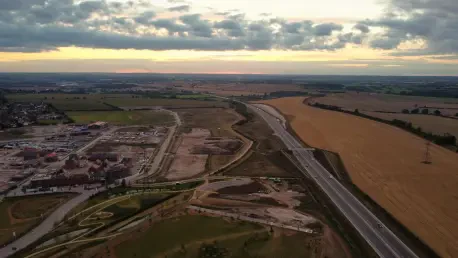Imagine a rural community where students struggle to complete online assignments, businesses miss out on digital markets, and families can’t access telemedicine during critical times due to unreliable internet. This is the stark reality for many in Wasco County, Oregon, a region that Q-Life Network aims to revolutionize with a bold $10.4 million federal funding proposal. This ambitious initiative seeks to expand fiber-optic broadband, bridging the digital divide that has long isolated rural areas from economic and social opportunities. By providing high-speed internet to thousands of residents, schools, and businesses, the project promises to enhance education, spur growth, and improve healthcare access. As digital connectivity becomes as vital as electricity, this effort could mark a historic turning point for the community, echoing the transformative impact of rural electrification nearly a century ago.
The Stakes of Digital Equity
Bridging the Rural Digital Divide
In rural Wasco County, the lack of reliable internet has created a persistent barrier, excluding many from the benefits of the digital age that urban areas take for granted. Q-Life Network’s proposal to secure $10.4 million in federal funding aims to dismantle this barrier by deploying fiber-optic broadband across the region. The initiative targets underserved households, schools, and small businesses, ensuring they can tap into online resources for education, job opportunities, and modern commerce. Local leaders argue that this expansion is not just about connectivity but about equity, giving rural families and entrepreneurs the tools to compete in a digital economy. The economic ripple effects could be profound, with potential increases in property values and new investments drawn to a newly connected area. If successful, this project could serve as a model for other rural communities grappling with similar challenges, proving that targeted public investment can close long-standing gaps.
Economic and Social Transformation
Beyond mere access, the broader implications of Q-Life’s broadband expansion touch on transformative social and economic outcomes for Wasco County. High-speed internet is expected to open doors to remote work, allowing residents to pursue careers without relocating to urban centers, thus preserving the community’s fabric while boosting local income. Educational institutions stand to gain as well, with students gaining seamless access to online learning platforms and resources previously out of reach due to slow or nonexistent connections. Additionally, telemedicine services could become a lifeline for rural healthcare, enabling patients to consult specialists without long travel. Proponents highlight that such connectivity fosters resilience, ensuring communities aren’t left behind as digital tools become integral to daily life. This initiative, therefore, isn’t just infrastructure—it’s a foundation for a more inclusive and competitive future in a region often overlooked by private sector investment.
A Collaborative Vision for Connectivity
Unified Leadership and Regional Support
The driving force behind Q-Life Network’s $10.4 million bid is a remarkable coalition of local entities, showcasing a shared commitment to uplifting Wasco County through digital access. Formed over two decades ago by the City of The Dalles and Wasco County, Q-Life recently welcomed Northern Wasco County People’s Utility District as a partner, strengthening its technical and organizational capacity. Executive Director Liz Lance has emphasized the urgency of ensuring rural residents aren’t sidelined in the digital era, while board president Lee Weinstein envisions specific benefits like enhanced student learning and telehealth access. Meanwhile, utility district leader Roger Kline compares reliable internet to essential services like electricity, a perspective reinforced by the critical role connectivity played during recent global challenges. Together, these voices reflect a unified belief that broadband is indispensable for community vitality and fairness, positioning this project as a cornerstone of regional progress.
Navigating the Funding Pathway
Securing the $10.4 million hinges on a meticulous process involving state and federal oversight, underscoring the complexity of such transformative projects. Q-Life submitted its application through the Oregon Broadband Office to the U.S. Department of Commerce under the national Broadband Equity, Access, and Deployment (BEAD) program, which allocates significant resources to expand internet coverage nationwide. Oregon itself has been designated a substantial share of these funds, and Q-Life’s proposal has earned a recommendation from state authorities, marking a promising step forward. However, the journey isn’t complete—public comment periods and federal reviews remain critical hurdles before final approval. This funding, if granted, would build on Q-Life’s existing 17-mile fiber backbone, which already serves various local entities. The outcome of these reviews will shape the timeline and priorities for construction, potentially setting a precedent for how rural broadband initiatives are funded and executed in other parts of the country.
Reflecting on a Historic Opportunity
Lessons from the Past Effort
Looking back, the collaborative push by Q-Life Network to secure federal funding for broadband expansion in Wasco County stood as a testament to the power of regional unity and strategic planning. The alignment of local leaders, from city officials to utility districts, mirrored the cooperative spirit of past infrastructure milestones, ensuring that the needs of rural residents were prioritized over mere profit motives. Their shared vision highlighted how digital access had evolved into a fundamental necessity, akin to utilities of yesteryear, especially when connectivity proved vital during times of crisis. The procedural rigor of navigating state recommendations and awaiting federal approval underscored the complexity of such endeavors, yet also reflected a national commitment to addressing digital inequities. This initiative, rooted in a deep understanding of historical disparities, aimed to redefine opportunity for a community long underserved by private investment.
Future Steps for Digital Inclusion
As the process unfolded, the next steps for Q-Life’s ambitious project focused on engaging the public and finalizing federal endorsements to turn plans into reality. Stakeholders anticipated that successful funding would catalyze immediate action, prioritizing areas with the greatest need to ensure swift impact on education, healthcare, and economic growth. Beyond Wasco County, the outcome was poised to offer valuable insights for similar rural initiatives, potentially influencing national broadband strategies under the BEAD program. Continued collaboration among local entities remained essential to sustain momentum, while monitoring technological advancements could further optimize the infrastructure rollout. Ultimately, this effort served as a reminder that bridging the digital divide requires not just investment, but persistent advocacy and adaptability to meet evolving community needs, setting a hopeful trajectory for equitable connectivity across overlooked regions.









